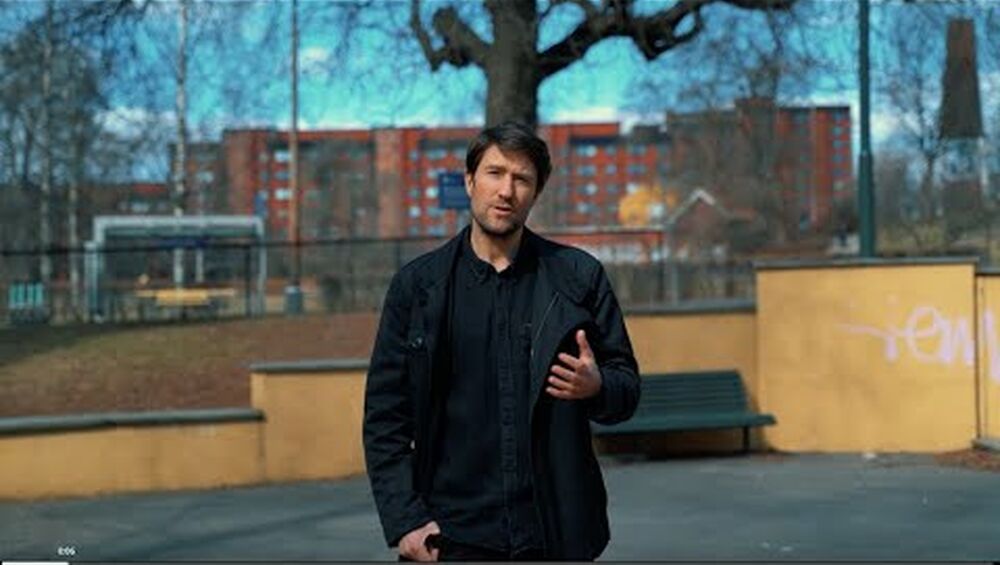We need to talk about neighbourhoods
"We are having a hard time planning for communities"

Triennale Director Christian Pagh. Photo: Erik-Jan Ouwerkerk.
– It is as if we are having a hard time building and planning for communities at neighbourhood level. We need to do something about that, says Christian Pagh, director and chief curator for the Oslo Architecture Triennale.

– It is as if we are having a hard time, nowadays, building and planning for communities at neighbourhood level.
Why do you see neighbourhoods as an urgent theme right now?
– The word «neighbourhood» implies both social and physical dimension of something we share. The Covid-19 pandemic made many of us more aware of the importance of good neighbourhoods. It also made it more obvious how some neighbourhoods are more fortunate than others and what consequences this has for the health and quality of life of its inhabitants. An intense debate on housing quality and housing access is taking place in Oslo, and internationally. There’s a growing demand for improvement and for friendly, human-scaled environments that add benefit beyond sleeping, shopping and a fast commute to the city. There is something hopeful in the term itself: in a good neighbourhood, we experience a sense of community and of sharing our everyday lives with others. It’s inherent in the very word, that you must consider your neighbour. In our time, it is as if we’re having a hard time building and planning for the community at neighbourhood level. That’s something we consider urgent to address in the time to come.
Could quality of neighbourhoods contribute to a more sustainable city development?
– If we create better everyday environments, which invite us to share more, it’s good for the environment for a number of reasons. We’ve got immense amounts of space that’s used very little. We could live a bit closer and share more with our neighbours, and thus, reduce the building mass and prolong its time of usage. Quite simply, there is a massive opportunity for sustainable transformation on neighbourhood level. But it requires awareness and empathy to make it happen. The focus of the Triennale is this ability to shape for the community, weave together the movements and functions of urban everyday life in.
"The focus of the Triennale is this ability to shape for the community, weave together the movements and functions of urban everyday life."
Christian Pagh, Director and Chief Curator
Triennalen skal være et laboratorium i tiden fremover. Hva betyr det?
– Det betyr at vi skal utforske. Vi skal samle praktikere, akademikere, arkitekter, kunstnere og andre fagfolk, og engasjerte borgere i samtaler og utforskinger av tenkning, initiativer, prosjekter og metoder som kan bidra til bedre nabolag. Nå går vi inn en periode hvor vi skal samle inn og stille spørsmål, og så skal vi etter hvert fokusere, velge ut og kuratere. Kuratere kommer jo av det latinske ”å ta vare på”, det samme ordet som engelske ‘care’. Og det er det vi skal, vi skal ta vare på det beste og det viktigste, og så skal vi vise det frem under triennalen. Sammen med universiteter, arkitektskoler, nordiske samarbeidspartnere, kommuner, private eiendomsutviklere, arkitektkontorer med flere skal vi i gang med å utvikle triennalens visjonsprosjekter. Vi er genuint åpne for innspill, så ta kontakt med oss!
Hva får publikum oppleve på festivalen høsten 2022?
– Vi skal ut og se og oppleve nabolag i funksjon, både det som er bra og det som ikke er så bra. Vi skal speile oss selv i byen vår, og se ordentlig etter. Og så har vi en ambisjon om å skape nye bilder av hva byen kan bli. Vi skal lage utstillinger, både om nabolag historisk sett, som en katalog av muligheter for å tenke nabolag på andre måter enn vi gjør i dag. Og vi skal se fremover. Hvordan kan fremtidige nabolag i Oslo bli? Og så blir det selvfølgelig samtaler i ulike formater, men mange har vel etter et år med korona kjent på en tretthet over å være på konferanse hjemme i stua, så vi kommer til å jobbe mye med det sanselige, det kunstneriske, den fysiske opplevelsen av nabolag og arkitektur. Så skal vi selvfølgelig lage skikkelig festival og fest, og ha det gøy sammen.
Hva når triennalen er over, hva skjer da?
– Utforskingene og samarbeidene, de åpne utlysningene, alt vi setter i gang i triennalen, skal munne ut i en verktøykasse, en katalog av inspirasjonseksempler, anbefalinger og innspill til nabolagsbygging og nabolagstransformasjon. Det handler om å skape et bedre språk for rikholdigheten som potensielt ligger i nabolagene og i hverdagskulturen – og styrke evnen til å planlegge og designe for det. Samtidig har vi en forventning om at de stedene i Oslo som blir utforsket gjennom triennalen og samarbeidspartnernes aktiviteter skal bli finere, mer rettferdige, hyggeligere og mer inspirerende enn hvis vi ikke hadde hatt denne triennalen. Vi tror faktisk på at Oslo skal bli bedre av triennalens aktiviteter.
__________________
Christian Pagh (1975) has been Director and Chief curator of the Oslo Architecture Triennale since January 1st, 2021. Before, Christian was partner and cultural director in the design office Urgent.Agency. He has headed a succession of projects within urban planning, strategic design, architecture and cultural development. He is an external lecturer in Design Thinking at Copenhagen Business School’s Department of Management, Politics and Philosophy, and has taught Cultural Theory and Creative Production at Malmö University. In recent years he has written about urban development and place making with a focus on its social and cultural aspects. Christian holds a master’s degree in Modern culture and Philosophy from Copenhagen University.


